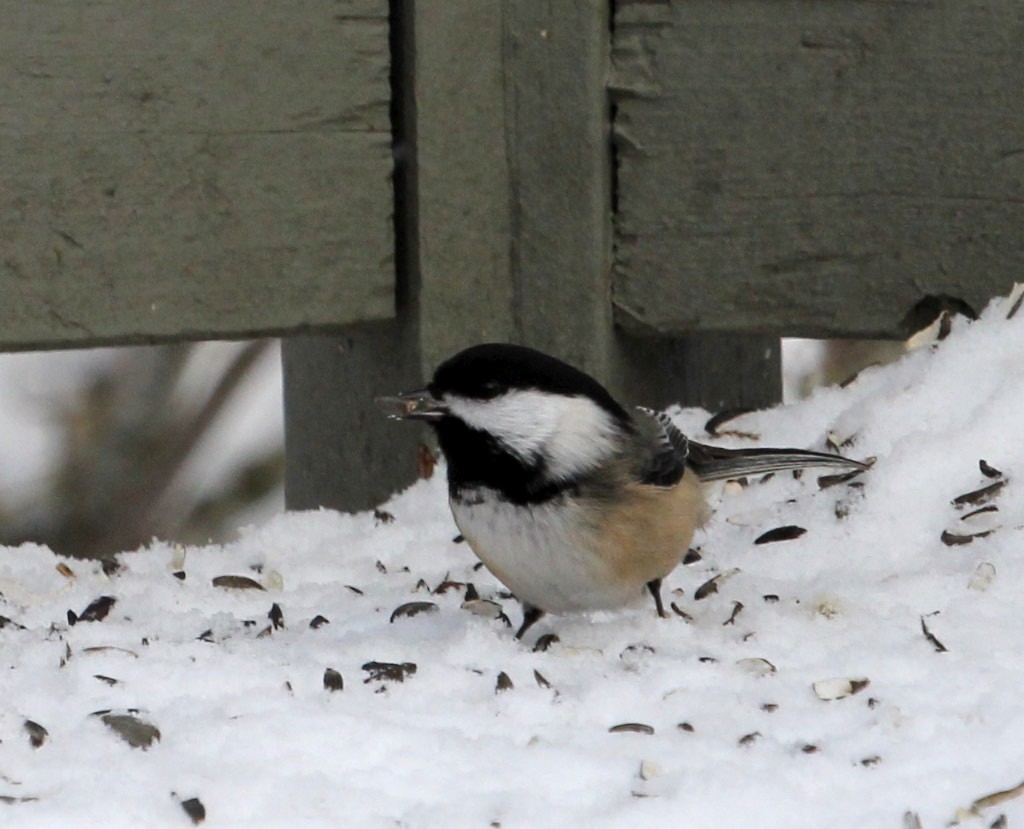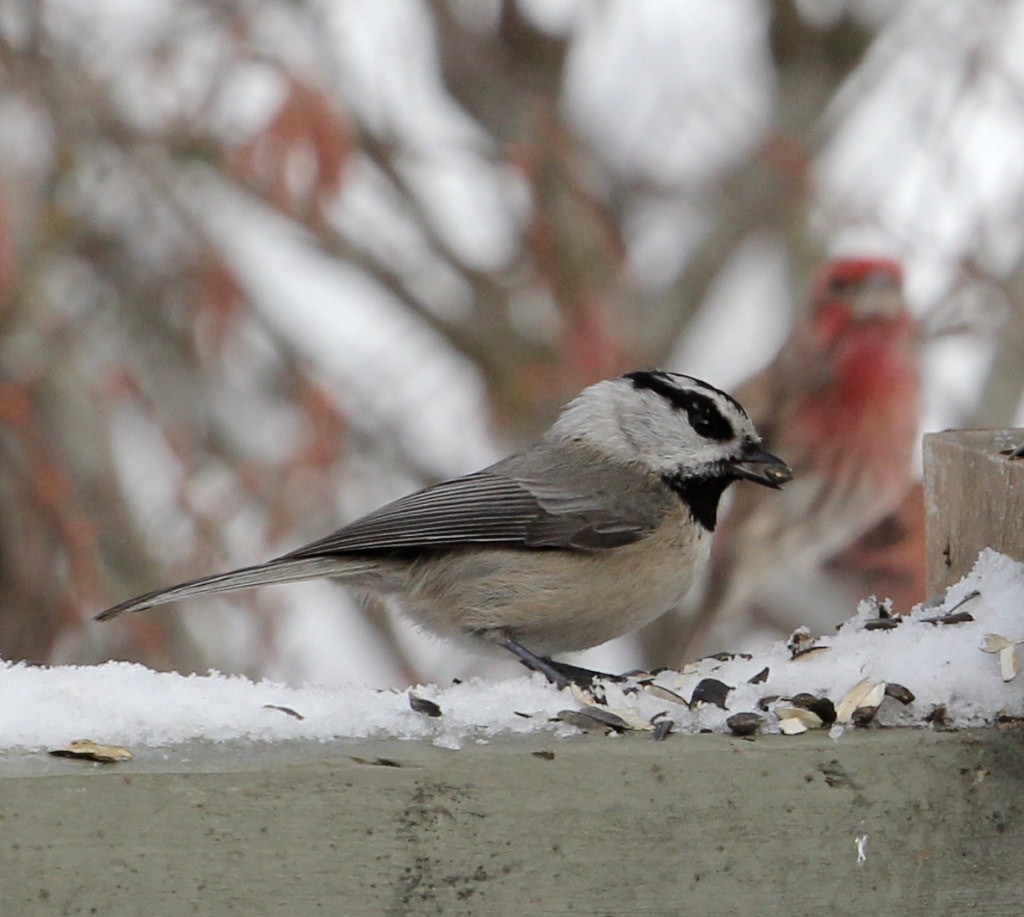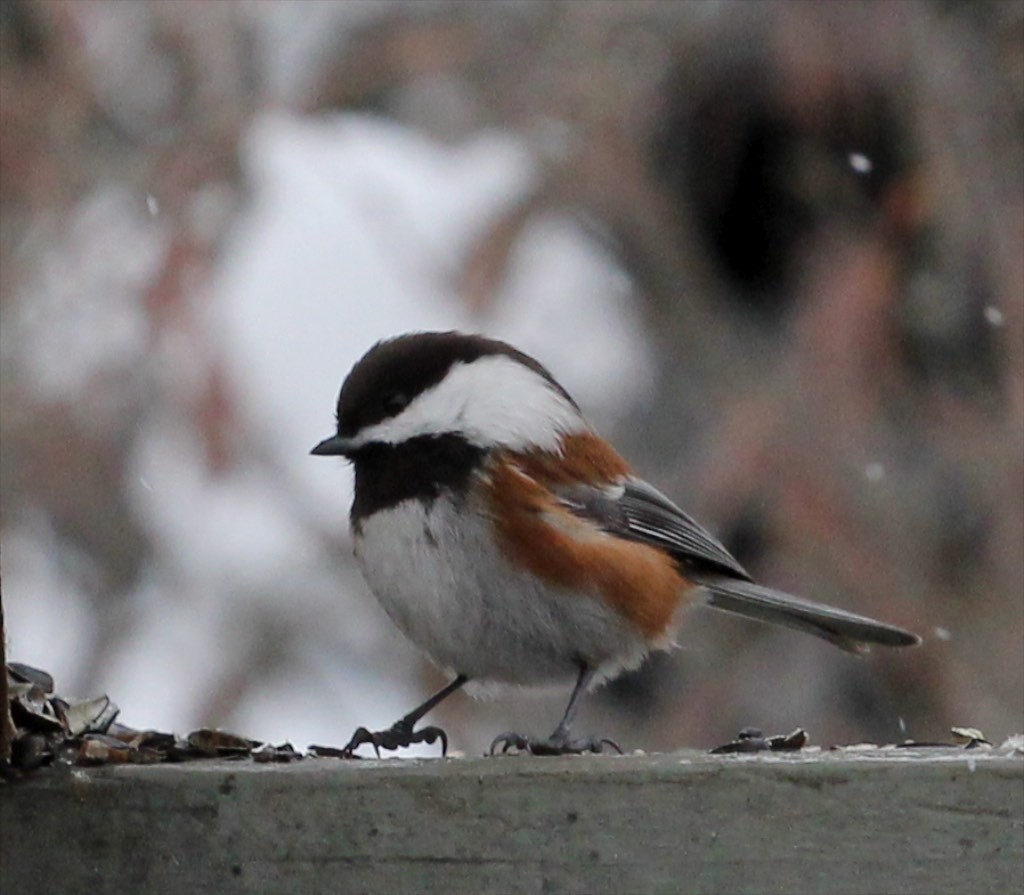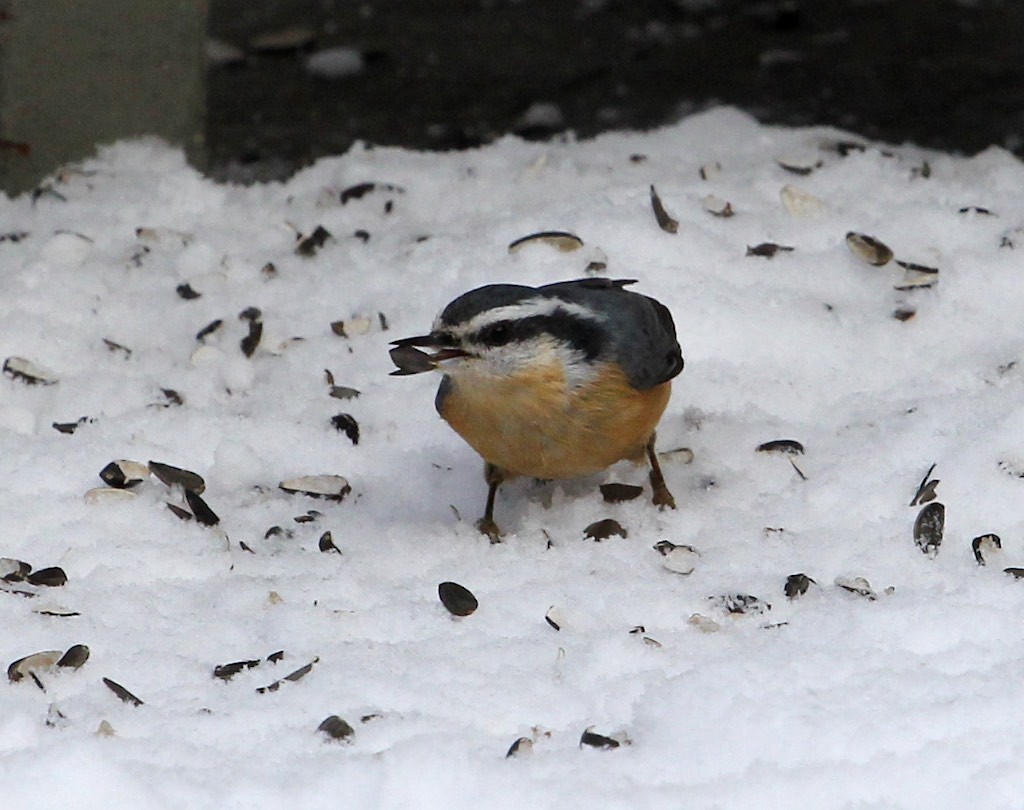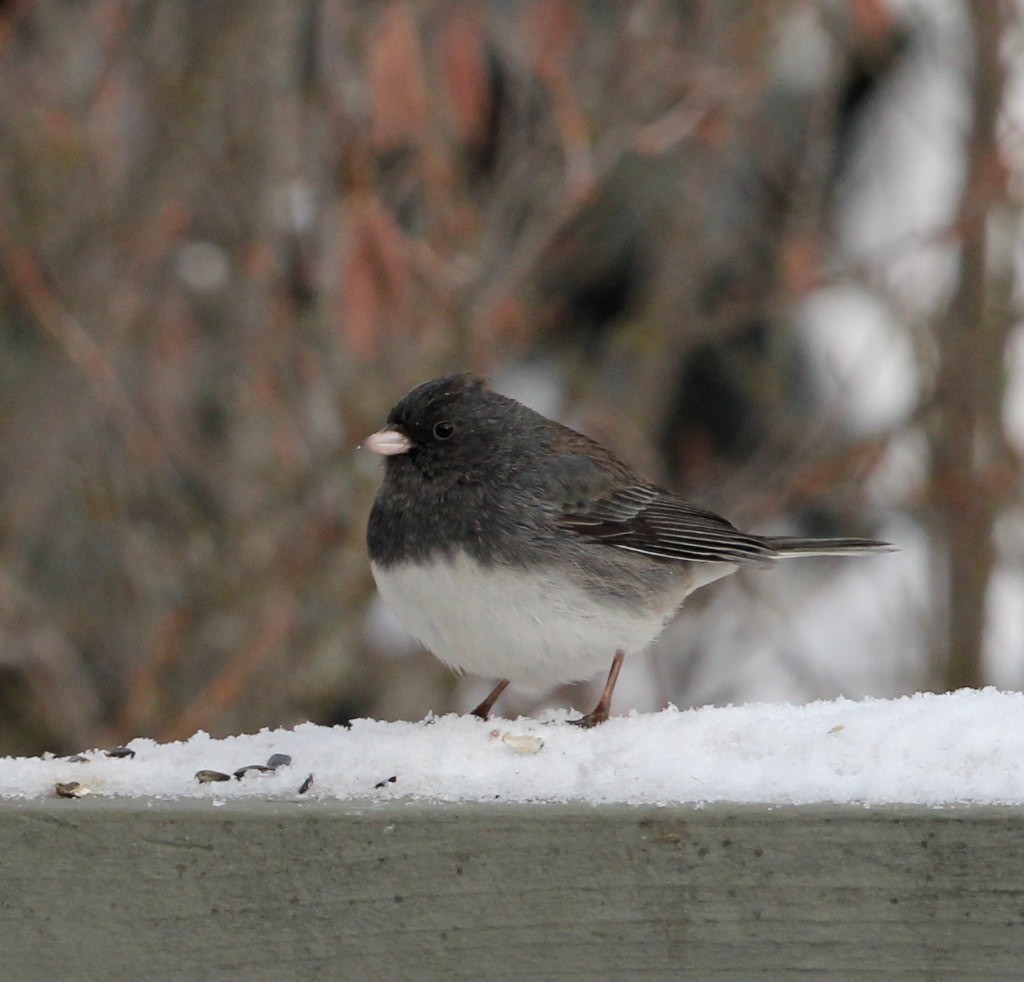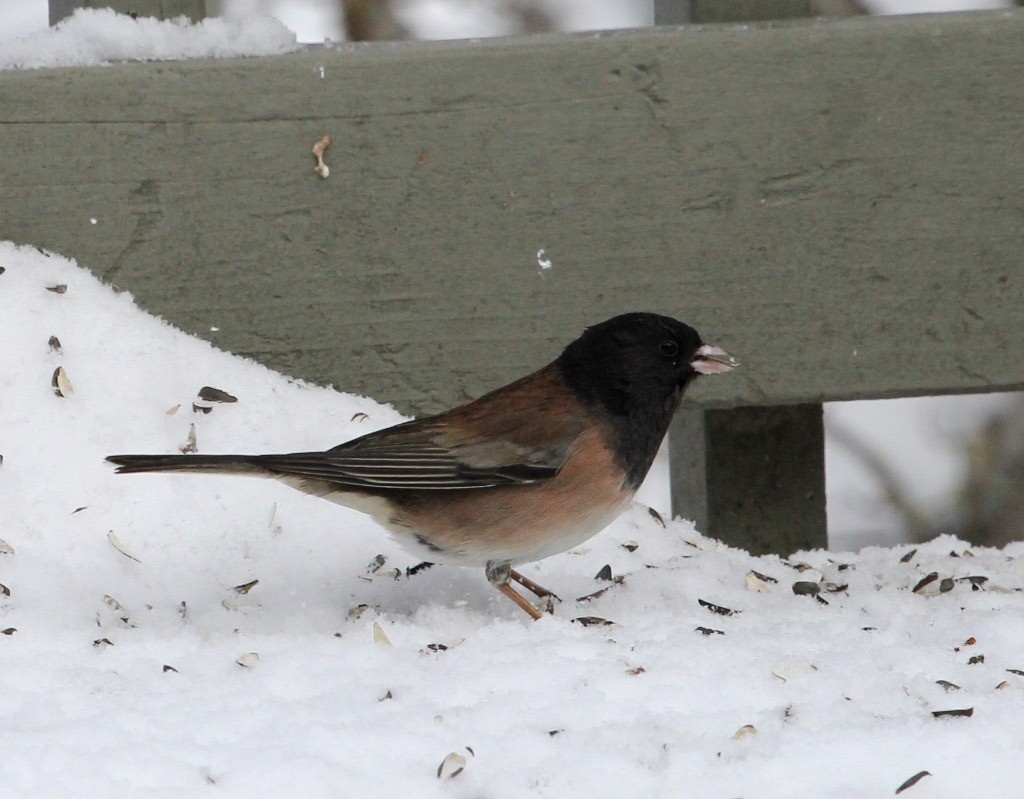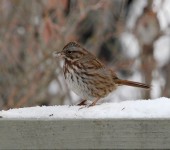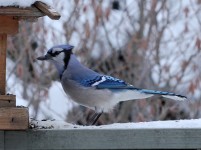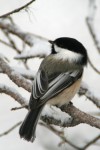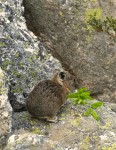A freshly-filled bird feeder can bring life to a backyard, deck or window. First one bird finds the feeder then entire flocks. Soon the feeder needs filled more than once a day.
Certain birds tend to frequent bird feeders in winter more often than others. In a three-week series, I’ll help you identify some of the more common birds at your feeder. All of the following birds have been attracted to sunflower seeds.
Black-capped chickadee
The bold markings on chickadees make them easy to identify at bird feeders especially since they are a grab-and-go bird only taking one seed at a time.
The black-capped chickadee may be the most identifiable with its black cap and bib, white cheeks and underside, and gray back, wings and tail. Black-capped chickadees are quick to discover bird feeders with sunflower seeds, peanuts, peanut butter, mealworms or suet. They also feed on bits of fat or meat from carcasses (if you choose to hang a bone leftover from hunting season in a tree).
Like many other birds that frequent feeders, black-capped chickadees form winter flocks composed of other chickadees, nuthatches, woodpeckers, kinglets, brown creepers, warblers and vireos (depending on the region).
Mountain chickadee
Mountain chickadees are similar to black-capped chickadees in appearance except they have a white stripe above their eye that bisects their black cap. They also form winter flocks with kinglets and nuthatches.
In addition to foraging at feeders, mountain chickadees eat pine seeds. They tend to shell seeds by holding them between their feet and hammering the seed apart with their beak.
Chestnut-backed chickadee
As their name implies, chestnut-backed chickadees sport a chestnut color on their back. Like the black-capped chickadee, they have a black head and bib and white cheeks.
They tend to form winter flocks with golden-crowned kinglets, red-breasted nuthatches, brown creepers and mountain chickadees.
Red-breasted nuthatch
Often found in flocks with chickadees and other small birds, red-breasted nuthatches have their own distinct markings. They have a black cap with a white stripe above their eye similar to chickadees. As their name implies, they have a rusty-cinnamon colored breast and belly with a blue-gray back. They also have a longer, narrower bill than chickadees.
In addition to conifer seeds, red-breasted nuthatches eat sunflower seeds, peanuts and suet from bird feeders.
Dark-eyed junco
Another boldly colored bird is the dark-eyed junco. They are one of the most common birds in North America but exhibit regional differences.
Two subspecies found in northern Idaho are the Oregon and slate-colored juncos. The slate-colored juncos are dark gray except for a white belly and white outer tail feathers. The male Oregon junco has a black head and neck, brown back, gray tail and white belly and outer tail feathers. Slight variations exist when the two subspecies interbreed.
The dark coloration on top and light color below is called counter-shading and makes it harder for predators to detect the birds when looked down upon from above.
While juncos prefer millet they eat sunflower seeds at feeders. Nearly 75 percent of their diet year-round is composed of seeds.
For more birds that visit your feeder, check out:
Originally posted January 2016. Updated March 2024.

